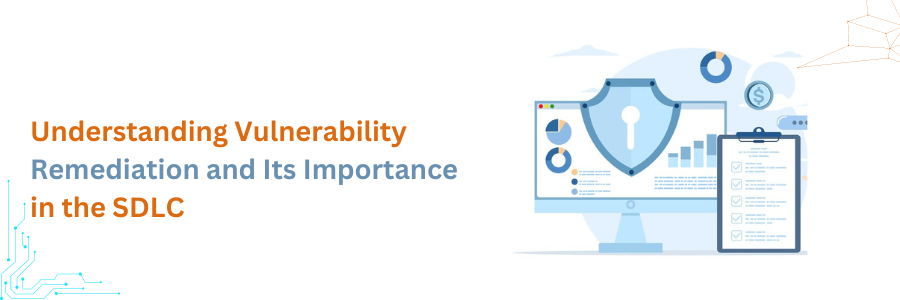Understanding Vulnerability Remediation and Its Importance in the SDLC

In the ever-evolving world of software development, security is a critical concern that cannot be overlooked. Vulnerabilities in software can lead to devastating breaches, data loss, and damage to an organization's reputation. This is where vulnerability remediation comes into play. But what exactly is vulnerability remediation, and why is it so essential to the Software Development Life Cycle (SDLC)? Let’s dive in and find out.
Understanding Vulnerability Remediation
Vulnerability remediation is the process of identifying, assessing, and fixing security weaknesses in software to prevent potential exploits.
This involves several steps:
Detection: Using tools and techniques to discover vulnerabilities within the software.
Assessment: Evaluating the severity and potential impact of these vulnerabilities.
Prioritization: Deciding which vulnerabilities to address first based on their criticality.
Remediation: Implementing fixes to eliminate the vulnerabilities.
Verification: Testing the fixes to ensure that the vulnerabilities have been properly addressed.
Why Is Vulnerability Remediation Crucial to the SDLC?
Integrating vulnerability remediation into the SDLC is not just a good practice; it's a necessity. Here’s why:
Proactive Security:
By addressing vulnerabilities early in the SDLC, you can prevent security issues from reaching production. This proactive approach helps in mitigating risks before they become serious threats.
Cost Efficiency:
Fixing vulnerabilities during the development phase is significantly cheaper than doing so after deployment. The longer a vulnerability goes unnoticed, the more expensive and complex it becomes to fix.
Enhanced Quality:
Security is a key component of software quality. Ensuring that your application is free from vulnerabilities contributes to overall robustness and reliability. Regulatory Compliance:
Many industries are subject to regulatory requirements such as GDPR, HIPAA, and PCI-DSS. Integrating vulnerability remediation into the SDLC helps ensure compliance with these standards, avoiding potential legal and financial penalties.
Customer Trust:
In an age where data breaches are common, demonstrating a commitment to security can enhance customer trust. Users are more likely to engage with and remain loyal to software that prioritizes their data security.
Steps to Integrate Vulnerability Remediation into the SDLC
Adopt a Security-First Mindset:
Security should be a priority from the outset. Incorporate security considerations into every phase of the SDLC, from planning and design to deployment and maintenance.
Use Automated Tools:
Leverage automated security tools such as Static Application Security Testing (SAST) and Dynamic Application Security Testing (DAST) to continuously monitor and detect vulnerabilities.
Implement Continuous Integration/Continuous Deployment (CI/CD):
Integrate security checks into your CI/CD pipeline. This ensures that every code change is automatically tested for vulnerabilities before being merged and deployed.
Conduct Regular Security Training:
Educate your development team about common security vulnerabilities and best practices. A well-informed team is better equipped to write secure code and identify potential issues early on.
Perform Regular Audits and Penetration Testing:
Regular security audits and penetration tests help uncover vulnerabilities that automated tools might miss. These assessments provide a comprehensive view of your application’s security posture.
Create a Remediation Plan:
Develop a clear plan for addressing discovered vulnerabilities. This plan should include steps for assessment, prioritization, and implementation of fixes, as well as timelines for each phase.
Conclusion
Vulnerability remediation is a vital aspect of the SDLC that ensures the security and integrity of your software. By integrating remediation practices into every stage of the development process, organizations can proactively address security issues, reduce costs, enhance software quality, comply with regulations, and build customer trust. In today's landscape, where cyber threats are increasingly sophisticated, making vulnerability remediation an integral part of your SDLC is not just beneficial—it's essential. Embrace a security-first approach and safeguard your software from potential threats, ensuring a secure and resilient product for your users.


